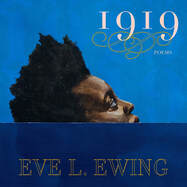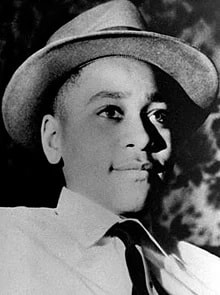| In response to what she learned from the report, Ewing wrote a collection of poems, called 1919, “meant as a small offering, an entry point into a conversation about a part of our history that I think is worth talking about.” Ewing has divided her book into three sections, “Before,” “What Happened,” and “After,” and before each work, she includes the passage(s) that inspired the particular poem and the page number where the passage can be found in The Negro in Chicago, a publicly available document. Pictured at the right: 1919, Poems by Eve L. Eweing |
| Pictured at the left: Cameron McWhirter's Red Summer: The Summer of 1919 and the Awakening of Black America The uprising in Chicago began on July 27, 1919, after some Black boys who were swimming in Lake Michigan drifted into what was a considered a “White area.” People on the shore started throwing rocks at the boys, and one of them, Eugene Williams, was struck and killed. “Back on the beach,” wrote Ewing, “a group of Black people demanded that a police officer arrest the person deemed responsible, and he refused. Within a few hours, the riot had begun.” |
Various poems make reference to Biblical verse, “how hot was it?” jokes (and the poetry of Langston Hughes), jump rope rhymes, Blackout poetry, the poetry of Carl Sangburg and more.
For me, a small portion of Ewing’s poem “James Crawford Speaks” even called to mind Emily Dickinson’s poem “I’m Nobody! Who are you?” along with the “I Am a Man” protest signs from the 1968 sanitation workers’ strike in Memphis. James Crawford was in the crowd as the Chicago riot broke out, and according to the 1922 report, he “fired into a group of officers and was himself shot and killed by a Negro policeman who had been sent to help restore order.” In her poem, Ewing wrote of Crawford, “I didn’t want to be somebody, but he was somebody, because I saw the whites of his eyes before he let go of the railroad tie.”
My favorite poem in the book is “I saw Emmett Till this week at the grocery store” – it literally gave me chills. Of course, Till was lynched days after an encounter with 21 year old Carolyn Bryant after he’d entered Bryant’s Grocery and Meat Market to buy candy. However, Ewing's poem is not about the encounter in that grocery store. No, her poem has a brilliant twist as it takes place in a grocery store in Chicago prior to Till’s trip to Mississippi, and the poem reflects in Emmett the affable spirit of a fourteen year old boy -- albeit with an ominous sigh.
The poem ends with the following lines:
just this once I hope you’ll forgive me
for writing a somewhat didactic poem
I just didn’t know how else to say
that we live in a time of sightseers
standing on the bridge of history
watching the water go by
and there are bodies in the water
and the water has been dirty for so long
However, the continued social unrest and protests this summer brought on by the deaths of George Floyd, Breonna Taylor, Daniel Prude, and others, suggest that many of the "sightseers" are tired of seeing the bodies drift by in the water. I certainly hope so.



 RSS Feed
RSS Feed
